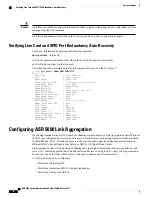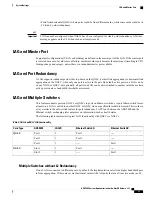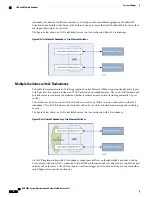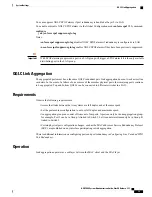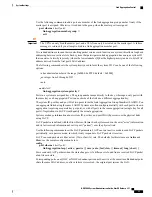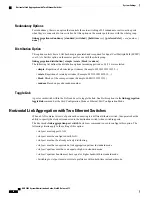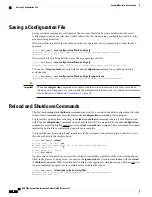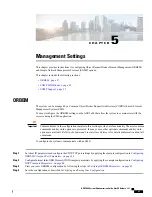
redundancy) connected to different switches, each card provides a candidate aggregation of bandwidth.
Selection by bandwidth works because the failure of one port causes that card's bandwidth to be lower, thus
causing another card to be selected.
The figure below shows an LAG established across two line card ports without L2 redundancy.
Figure 9: LAG without L2 Redundancy, Two Ethernet Switches
Multiple Switches with L2 Redundancy
To handle the implementation of Link Aggregation Control Protocol without requiring standby ports to pass
LACP packets, two separate instances of LACP are started on redundant cards. The two LACP instances and
port link state are monitored to determine whether to initiate an auto-switch (including automatic L2 port
switch).
Two switches can also be connected to odd and even slots of an XGLC in active-active mode without L2
redundancy. Two LACP instances are started for odd and even slots, and similar monitoring and switching
occurs.
The figure below shows an LAG established across two line card ports with L2 redundancy.
Figure 10: LAG with L2 Redundancy, Two Ethernet Switches
An LACP implementation with L2 redundancy cannot pass traffic even though standby ports have link up.
For example, with two QGLCs connected to two different Ethernet switches configured as a top-bottom pair
and all ports in the same LAG, failure of ports would not trigger a LAG switch until the active port number
ratio flipped (more ports down than up).
ASR 5000 System Administration Guide, StarOS Release 21.1
72
System Settings
LAG and Multiple Switches
Summary of Contents for ASR 5000
Page 26: ...ASR 5000 System Administration Guide StarOS Release 21 1 xxvi Contents ...
Page 316: ...ASR 5000 System Administration Guide StarOS Release 21 1 288 VLANs VLAN Related CLI Commands ...
Page 400: ...ASR 5000 System Administration Guide StarOS Release 21 1 372 Engineering Rules ECMP Groups ...













